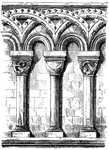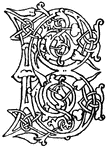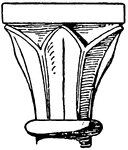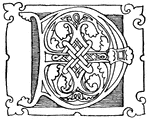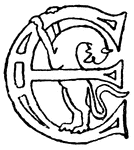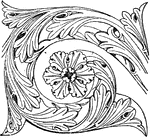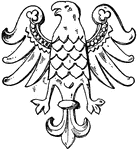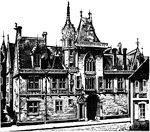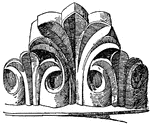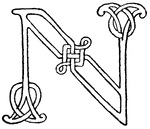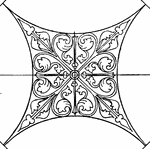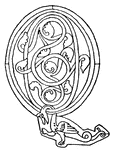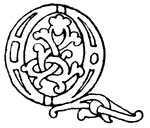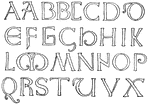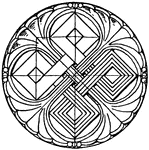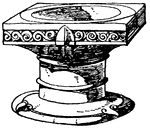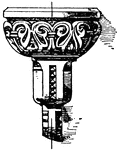Clipart tagged: ‘Romanesque’

Apse
"A semicircular recess usually placed at the east end of the choir or chancel of a romanesque, or what…
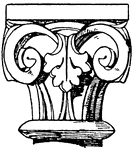
Romanesque Capital
This Romanesque capital is a simple design that is reminiscent of the Antique style.
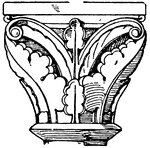
Romanesque Capital
This Romanesque capital is found in cloisters of a church. It is a simpler design that is reminiscent…
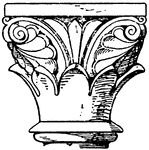
Romanesque Capital
This Romanesque capital is found in cloisters of a church. It is a simpler design that is reminiscent…
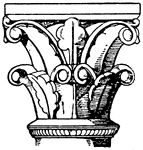
Romanesque Capital
This Romanesque capital is found in cloisters of a church. It is a simpler design that is reminiscent…
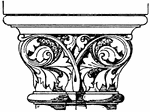
Romanesque Coupled Capital
The Romanesque Coupled Capital looks like two capitals that are conjoined together.
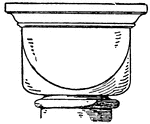
Romanesque Cushion Capital
The Romanesque Cushion Capital is found in St. Gereon's church in Cologne, Germany. It is a design of…

Romanesque Cushion Capital
The Romanesque cushion capital is a design found in a monastery in Lippoldsberg, Germany. The design…
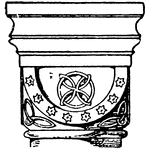
Romanesque Cushion Capital
This Romanesque Cushion Capital is found in the Abbey church in Germany. It is a design of a half sphere…
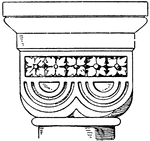
Romanesque Double-Cushion Capital
The Romanesque Double-Cushion Capital is an 11th century design found in the Rosheim church in France.…
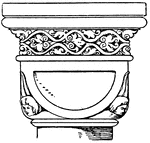
Romanesque Double-Cushion Capital
The Romanesque Double-Cushion Capital is a design of a half sphere that is cut by planes below and on…
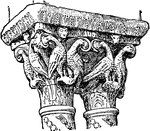
Romanesque Capitals
An illustration of a Romanesque capitals from the cloister of Monreale near Palermo, Sicily. In several…
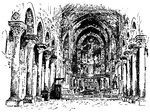
Cathedral of Monreale - Interior View
Illustration of the Cathedral at Monreale, near Palermo. It is an example of Sicilian and Norman architecture.…
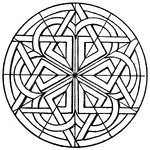
Romanesque Circular Panel
The Romanesque circular panel is a 12 century design found on the portal of the St. Laurence church…
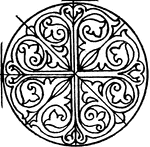
Romanesque Circular Panel
The Romanesque circular panel is a design found on a 12th century manuscript.

Romanesque Console
This Romanesque console is a 12th century design found in the Noyon cathedral in France. This type of…

Plan of Durham Cathedral
The Cathedral Church of Christ, Blessed Mary the Virgin and St. Cuthbert of Durham, commonly referred…
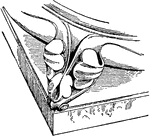
Griffe
"Griffe from Vézelay. GRIFFE. In medieval architecture, from the eleventh to the fifteenth century,…
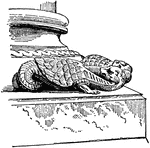
Griffe
"Griffe from Poissy; end of 12th century. GRIFFE. In medieval architecture, from the eleventh to the…
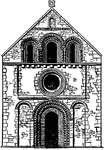
Front of Iffley Church
Very few examples remain of important Norman façades in their original form, nearly all of these…

Romanesque Interlacement Band
The Romanesque interlacement band consists of wavy arcs and curves that have an angular bend. It is…

Romanesque Interlacement Band
The Romanesque interlacement band consists of wavy arcs and curves that have an angular bend.
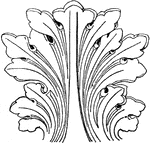
Romanesque Leaf
This Romanesque leaf design was found in a monastery in St. Trophimus (Southern France).

Romanesque Alphabet
Alphabet, beginning of the 8th century, Saint Cuthbert's evangeliarium, British Museum.

Romanesque Church
Line drawing of a large Romanesque church. The illustration is similar to the Imperial Cathedral Basilica…
One Bay of Transept, Winchester Cathedral
The transept is the area set crosswise to the nave in a cruciform ("cross-shaped") building in Romanesque…
